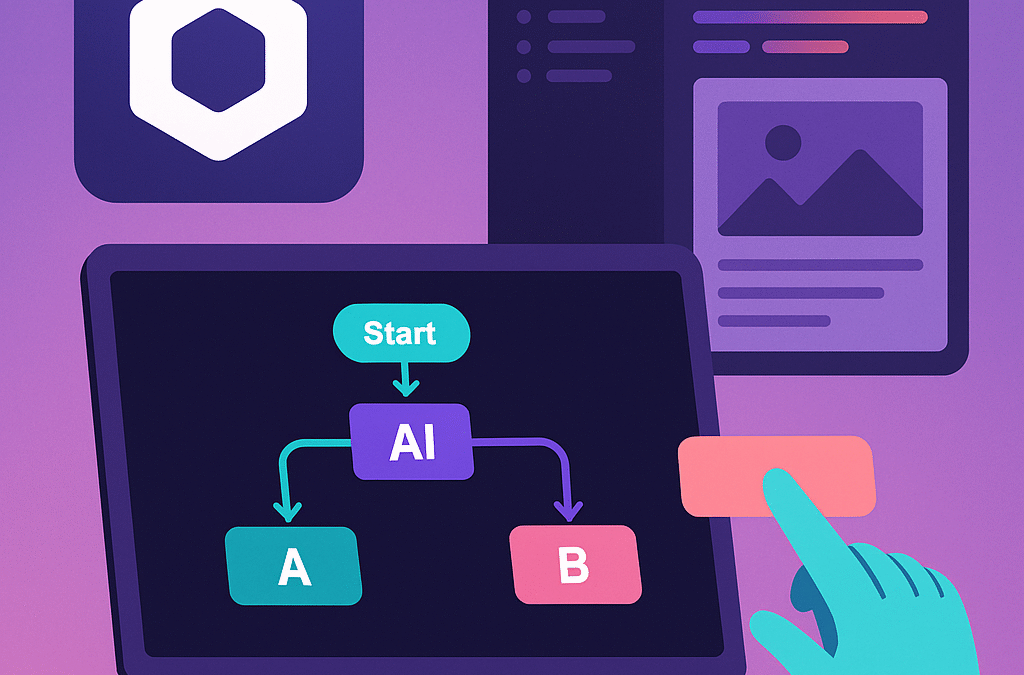Google launches OPAL – Describe, build and share your mini-apps
As AI and no-code platforms rapidly transform how we build and use software, developers are facing new opportunities – and challenges. Opal is a groundbreaking solution that enables users to easily describe, build, and share AI-powered mini-apps without coding every detail from scratch. This article explores how Opal simplifies workflows, lowers the barrier for AI development, and provides developers with practical tools and strategies to thrive in a fast-evolving ecosystem.
Why Opal? A new era of AI development
The development landscape is shifting fast. According to recent studies, 65% of all application development now happens through no-code or low-code platforms – a fundamental change in how software is created. The no-code AI platform market was valued at USD 4.9 billion in 2024 and is expected to grow at over 38% CAGR through 2029. Opal is perfectly positioned within this trend, offering developers:
-
Simplified workflow design: Build powerful, multi-step AI solutions just by describing the logic – Opal visualizes the flow for you.
-
Flexibility: Create and remix your mini-apps using conversational commands, a visual editor, or a combination of both.
-
Instant sharing: Make your AI apps available to others instantly through their Google account.
For both experienced developers and beginners, this means drastically shortened development time – no-code platforms can cut time-to-market by up to 90%.
Mini-apps: Small, flexible AI solutions with big potential
Mini-apps are modular, lightweight applications that run inside a host app and provide specific functionality without requiring standalone installation. In Opal, you can quickly build these by chaining AI models, prompts, and external tools. Example use cases include:
-
Automated customer support – like DigitalGenius, where AI handled 48% of tickets and boosted customer satisfaction by 10%.
-
Personal gaming chatbots that adapt to player behavior and improve engagement.
-
Efficient internal tools for data aggregation or report generation – without complex backend systems.
Statistics show mini-apps deliver 30% higher user retention than traditional apps, and 75% of no-code apps meet or exceed performance expectations.
Current trends: Democratizing AI development and rapid market growth
Opal’s rise mirrors a broader trend, where tools like Canva, Figma, and Replit enable both technical and non-technical users to prototype and develop quickly. The no-code AI market is exploding – from USD 3.83 billion in 2023 to a projected USD 24.8 billion in 2029. At the same time, reports show that AI apps globally generated over USD 2 billion in just the first eight months of 2024, with ChatGPT leading the charge with over 160 million downloads and nearly USD 270 million in revenue.
This growth is fueled by:
-
High demand for fast, customizable AI solutions
-
Increased interest from both enterprises and individual developers
-
Technological advances making AI more accessible – like Opal’s natural language interface and visual editor
A recent survey revealed that 88% of companies are already running some form of low-code project, and 65% of development work now happens without traditional coding.
Best practices: Practical tips for successful AI mini-app development
To succeed with Opal and similar platforms, several proven strategies apply:
-
Define clear goals: Set concrete and measurable objectives for each mini-app.
-
Iterate fast: Leverage no-code features to quickly test, evaluate, and refine.
-
Build modularly: Break complex apps into smaller, manageable mini-apps for more flexibility.
-
Prioritize security: Handle data and user privacy according to regulations from day one.
-
Track and improve: Gather user feedback and monitor performance metrics continuously.
One concrete case is a U.S. company that automated 48% of its support requests using DigitalGenius and saw a 10% increase in satisfaction. Integrating Opal can lead to similar outcomes across industries and use cases.
Conclusion: Opal unlocks new doors for AI developers
Opal makes AI development accessible, fast, and scalable – not just for professional developers, but for anyone with an idea and a desire to make an impact. By combining visual workflows, natural language, and modular architecture, you can quickly build, test, and share AI-powered mini-apps that meet the demands of today – and tomorrow. With market growth and technological innovation accelerating, now is the time to explore Opal and join the next wave of AI application development. Start experimenting today – and inspire others by sharing your own AI mini-apps.
This article was enhanced with the support of AI.

